Every person has nevi on their body that do not pose any danger to their health. But if a mole grows, is there any cause for concern? This condition should not be ignored, as it may indicate the development of cancer. If any changes in the shape or size of a skin lesion are detected in an adult or child, it is necessary to undergo additional examination.
Reasons for growth
If a mole has increased significantly in size, this could be influenced by the following external or internal factors:
- Infectious diseases that lead to the activation of inflammatory processes on the surface of the skin.
- Hormonal changes in the body. A large number of birthmarks begin to appear precisely during the period of hormonal maturation. The cause of the second growth spurt is sometimes attributed to pregnancy.
- Intense exposure of the body to ultraviolet rays received under the scorching sun or in a solarium.
- Moles can quickly grow due to constant trauma (during shaving, from rubbing clothes, on the head from a comb, on the face from the negative effects of cosmetics).
People with light skin that is covered with freckles are most susceptible to the rapid growth of moles.
Signs of a benign course
It can be difficult to notice that moles have begun to grow on the body. This is possible when skin lesions have changed their size or shape over a short period of time. But usually nevi are capable of adding 1-2 mm in diameter per year, which is very difficult to notice.
The following signs indicate the benign nature of a birthmark:
- The skin formation is uniformly colored over the entire area. Its color can be anything from light flesh to black or red.
- The shape of the neoplasm is flat or slightly convex.
- Hair may grow on the surface of the mole, which is a reliable sign that it is benign.
- The surface of the nevus may be warty.
- Absence of any pain, discomfort or itching in the area of the skin near the birthmark.
List of alarming symptoms
The following symptoms indicate the possible onset of malignant processes in skin tumors:
- An increase in the size of the mole to 6 mm or more.
- Uneven color of the skin formation, especially if there are several shades on its surface.
- The mole is rough, covered with cracks and irregularities.
- The nevus does not have clear boundaries. They may be blurry or uneven.
- The skin formation constantly changes its appearance.
- The mole may itch, bleed, swell, become red, or darken. Even minor changes should cause concern.
Features of large moles
Large birthmarks in themselves are not dangerous to humans, but they are much more easily injured. This can happen due to negligence, and systematic damage to skin growths increases the risk of their malignant degeneration. It is the owners of large birthmarks, the diameter of which exceeds 6 mm, who complain that over time they begin to grow and itch.
Therefore, people with a similar problem need to contact the appropriate doctor, constantly monitor the condition of the formation and take care of it. In some cases, it is advisable to remove the birthmark, especially if it has increased in size or has become itchy.
Complications and consequences
Moles that are able to increase in size can transform into melanoma. This is a very dangerous malignant tumor that quickly metastasizes to almost any human organ. This type of cancer responds well to treatment only in the initial stages of development. When metastases appear, the prognosis is less favorable. Typical signs of melanoma include:
- The surface of the skin formation is covered with ulcers, from which fluid or blood constantly oozes.
- The mole is unevenly colored. Colors such as blue, purple, black, red, and orange are especially common on the surface of melanoma.
- Melanoma can quickly increase in size and height. In a short period of time it can become convex; such a change will not be observed over the entire area.
- The appearance of pain.
- The boundaries of the nevus became unclear and spread to the sides.
- The formation on the skin has lost its symmetry.
Is the growth of moles in children dangerous?
The appearance of small birthmarks on a child’s body does not pose a danger to his health. But what should cause concern is the growth of skin tags if they are swollen or swollen. In this case, you must immediately show the baby to the doctor. He will be able to determine the cause of the changes and prescribe the correct treatment.
When large moles appeared on a child’s body, 40% of them became malignant.
Each parent should carefully monitor the condition of the skin and follow simple preventive measures:
- control of the symmetry of skin formations present on the child’s body;
- observation of the shape and color of moles;
- control of nevus growth;
- monitoring the contours of birthmarks;
- systematic visits to a pediatric dermatologist (about once a year);
- Immediately contact a doctor after a child carelessly picks off a mole.
Diagnostics
To make an accurate diagnosis, several diagnostic procedures are performed:
- Visual examination of the skin and study of the patient's medical history. Warning signs include evidence of the presence of melanoma in close relatives.
- Dermatoscopy. It is performed using a special device that enlarges the desired area of skin several dozen times.
- A biopsy of biological material is performed. It allows you to determine the nature of the origin of skin formations. Excisional biopsy is especially effective. During the procedure, under local anesthesia, the doctor completely removes the skin formation and examines the resulting material.
Which doctor should I contact for help?
Which doctor is recommended to consult if a rapid growth of a mole on the body is detected? It is best to seek help from a dermatologist or oncologist. They will be able to conduct the necessary research and, if necessary, prescribe appropriate treatment.
Some patients turn to cosmetologists with a similar problem, who are incompetent in such matters. Independent intervention in this process or the involvement of people without relevant experience can negatively affect the condition of the nevus. Inappropriate removal of moles can cause a growth spurt or cause the development of other health problems..
Should moles be removed?
What to do if the nevus has increased in size? Only a dermatologist will give precise recommendations on this matter after an examination. Mole removal is recommended in the following cases:
- There are signs of malignant degeneration of the skin growth.
- The mole is constantly exposed to injury.
- The formation occupies a significant area or is aesthetically unattractive.
If the mole does not pose a danger, it is best not to touch it, but simply observe it for a while. Unnecessary trauma to such formations is undesirable, so surgical intervention should be used in extreme cases.
In the human body there are cells responsible for skin color. They are called melanocytes. A mole (nevus) is an accumulation of such cells in one area. These formations come in various colors, shapes and topography. They appear both at birth and throughout life. Most often, moles do not cause any discomfort or health problems. However, recently, nevi of an oncological nature appear quite often. Even congenital benign formations can degenerate into cancer. There are quite a few reasons for this. A mole or nevus should be monitored periodically. When it changes color or shape, you should urgently consult a doctor. If there is such a formation on the body, then it cannot be injured. When taking a bath, it is better not to use a washcloth where moles grow. Often people are unhappy with the presence of such a cosmetic defect and try in every possible way to get rid of it. It is completely unacceptable to engage in such procedures at home. If the mole really looks bad, it is better to visit a medical facility. There, experienced doctors will help solve the problem without harm.
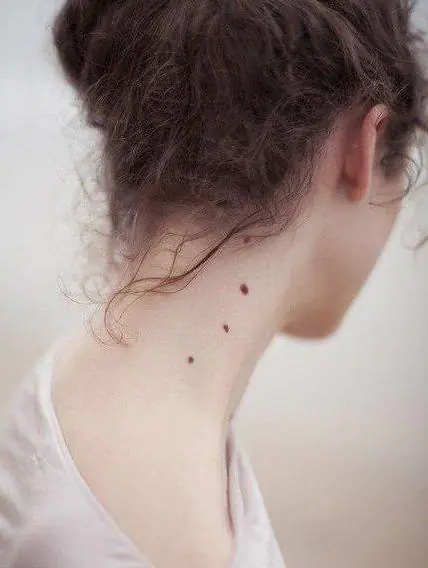
Types of moles
Main types of moles:
- Pigmented - can be light or black, small or very large. The main difference from the rest of the skin is the color.
- Vascular (hemangiomas) are pink or red formations with a bluish tint. They lighten when you press on the surface.
- Warty - raised, lumpy. Most often burgundy or pink. Sometimes they are flesh-colored.
Regardless of the group, they can all be benign or vice versa.
There are many nevi, each of which has its own medical name:
- blue moles;
- Sutton moles;
- complex moles;
- intradermal moles;
- giant pigmented moles;
- dysplastic nevi.
Sometimes it happens that hair grows from a mole. This is not some kind of alarming symptom. The most important thing is not to pull them out, so as not to injure the formation itself.
Reasons for the degeneration of a nevus into cancer
Often, most moles do not pose any danger. This requires a certain push. The most common causes of mole degeneration:
- Hormonal imbalance - during hormonal changes, skin cells change. It is necessary to carefully monitor nevi during puberty, pregnancy, and menopause. If a mole begins to grow, you should definitely consult a doctor.
- Excessive sun exposure is a major factor in the development of skin cancer. Exposure to ultraviolet radiation promotes cell degeneration. It is very important, while in the sun, to minimize the likelihood of developing burns; they greatly weaken the skin’s immunity and cause irreversible changes in it. Particular care must be taken to hide from the sun the places where moles grow.
- Trauma - Many people take moles on their body lightly. Few people know that injury to such a benign formation can quickly degenerate into cancer. Places where moles grow should not be rubbed with a washcloth. They should not be squeezed out or pulled with thread. If the mole still bothers you greatly, it is better to consult a doctor.
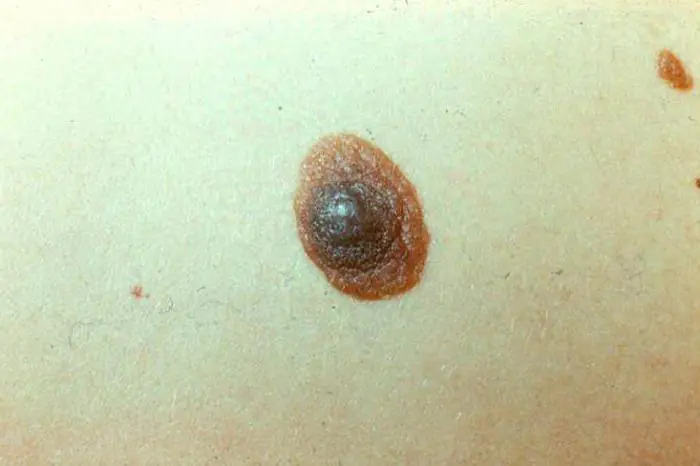
Dangerous moles
Why moles grow and how safe they are is of concern to many. You need to be very careful about them. Any changes in appearance should alert you. Periodically, congenital moles, under the influence of certain factors, can turn into cancer. The main thing here is not to miss the first symptoms. In the early stages, these diseases are easily treatable. The number of recovered people is almost 100%. In later stages, the prognosis is less optimistic and the disease can be fatal. You need to go to the hospital if a mole is growing very quickly. The doctor will tell you what to do in this case.
Symptoms of mole degeneration:
- changes in size, color;
- inflammation around the mole;
- its elevation above the surface of the skin;
- change in structure, varnish mole;
- discomfort associated with itching;
- formation of nodules, hardening;
- blurring of contours.
As for new moles, you should treat them even more carefully. Any new skin lesions larger than 0.5 centimeters require medical supervision. You should also go to the hospital immediately if a mole is growing rapidly. Not many people know which doctor to go to. Oncologists treat these diseases.
Safe moles
Most moles on the human body do not pose a health threat. Small congenital formations that are not compacted and have clear edges are completely harmless. They can degenerate into oncology only when exposed to certain factors. There is a certain type of benign nevi that can increase in size. Why moles grow is interesting to many. These types include hemangioma. This is a benign tumor caused by the accumulation of a large number of cells in the blood vessels. If the formation quickly increases in size, it is removed surgically. In most cases, treatment is carried out with hormonal drugs.

What moles need to be treated and how?
All suspicious formations on the skin require close medical supervision. Self-medication or removal at home is strictly prohibited. If the mole is benign and is a cosmetic defect, it is simply removed surgically. Laser therapy is also popular in this matter. With malignant tumors everything is more complicated. To begin with, many studies are carried out to make an accurate diagnosis and determine the stage. Then treatment is carried out. In the early stages, removal of the mole and further observation is sufficient. Advanced diseases are extremely difficult to treat. General chemical and radiation therapy is used. The prognosis may be unfavorable.
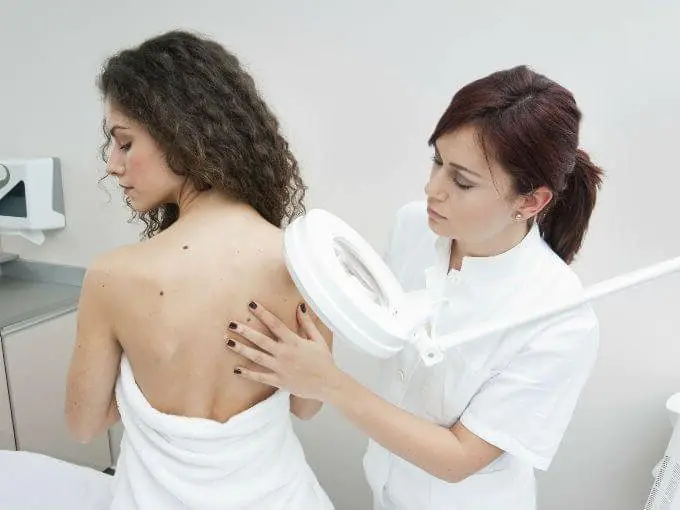
Complications after mole removal
In order to avoid complications after surgery to remove a mole, you must follow all the doctor’s instructions:
- treat the wound daily with an antiseptic solution;
- apply antibiotic ointment;
- Do not remove the crust from the surface of the wound yourself;
- Do not apply various cosmetics to the skin for 7-10 days.
As a rule, complete healing of the wound occurs after 3 weeks.
If a malignant mole has been removed, the patient must carefully monitor his body for a long time for new formations. If a relapse occurs, the patient is sent to oncology to continue treatment.
After removing ordinary moles and following all the doctor’s instructions, the risk of complications during this operation is minimal. If the size of the formation was large, scars and scars may remain, which can then be removed with a laser.
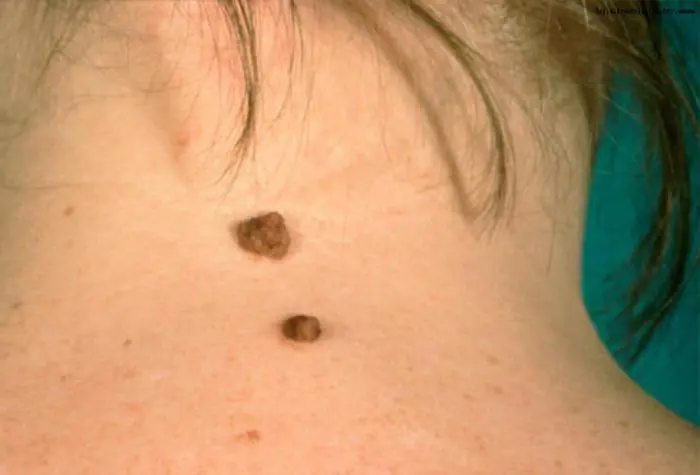
What not to do with moles
Any formations on the skin should be monitored. If the nevus does not manifest itself in any way for a long time, there is no need to worry. You should visit a doctor if new, suspicious moles appear. If existing ones begin to change, this also requires urgent medical consultation. When hair grows from a mole, under no circumstances should you pull it out or shave it off. This leads to injury, which can trigger the process of degeneration of the formation into oncology. To prevent a mole from causing problems, you must adhere to some simple rules:
- avoid prolonged exposure to the sun;
- do not use a washcloth in places where moles accumulate;
- do not pull out hairs from them;
- Moles cannot be squeezed out or combed.
If the mole is injured, you should consult a doctor.
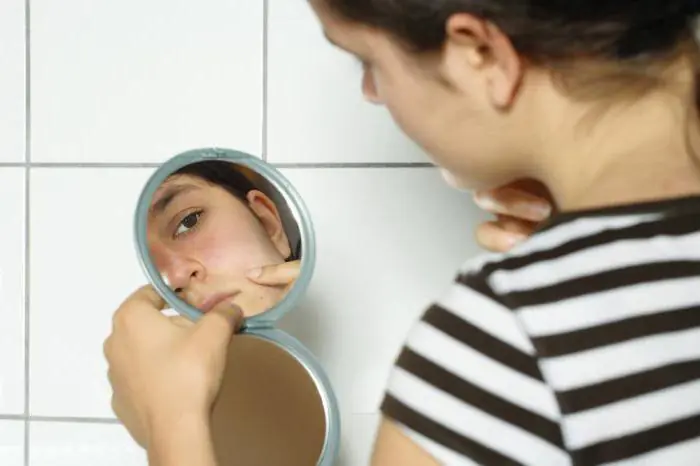
Moles in children
When moles grow on children's bodies, it causes a lot of worry for parents. The largest number of nevi in babies appear from birth to one year. Almost every child has small flat moles on the body. Require more attention:
- nevi more than 0.5 centimeters in diameter;
- elevated above the surface;
- with fuzzy edges;
- fast growing;
- changing color;
- itchy and inflamed.
If suspicious moles are identified, you should visit an oncologist.
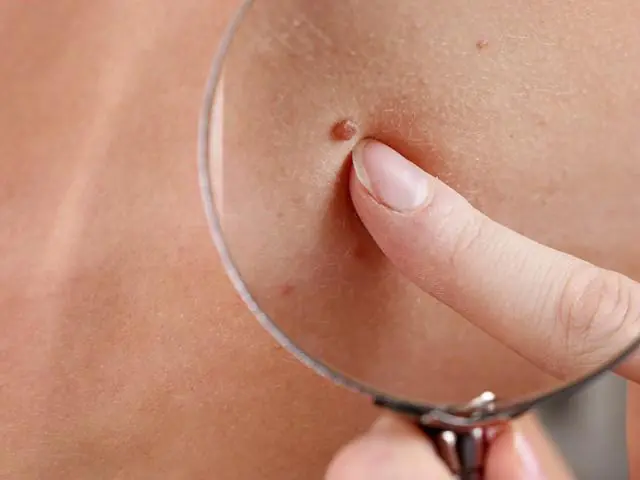
Folk signs about moles
Since ancient times, there has been a belief that a large number of moles portends a happy life for a person. By the place where moles grow, you can determine the nature:
- on the forehead - wisdom;
- on the cheeks and under the eyes - kindness and tenderness;
- on the cheekbones - courage, determination;
- on the scalp - a philosophical mindset;
- on the temple on the right - subtle intuition;
- on the ears - boasting;
- in language - such people are overly talkative;
- on the neck - high intelligence;
- on the shoulders - a karmic sign of strong people who do not recognize authorities;
- on the stomach - hysteria;
- on the eyelids - sensuality;
- above the upper lip - deceit;
- on the nose - a sense of humor, frivolity;
- on the foot - vital energy;
- On the shins - ease of instep;
- on your knees - impatience;
- on the palms - a hermit lifestyle;
- on the elbows - inability;
- on the back - demandingness towards oneself and others.
There are from several to several dozen moles on the body of an adult. Nevi differ in shape (hanging, flat or convex), size, and susceptibility to external irritating factors. They also differ in color: from light red to black shades. With age, their number on the body increases. Initially, they are safe and do not bother people. However, under the influence of various conditions, birthmarks can change. Every person who observes this phenomenon will ask what to do if a mole grows and what actions to take.
Why does a mole start to grow?
A mole is growing; what this means can be answered by a dermatologist or oncologist after a thorough examination. However, a rapidly growing nevus does not always indicate that the development of a malignant tumor or melanoma has begun. This is a dangerous disease characterized by the rapid proliferation of metastases. There are other factors that cause a mole to grow. Reasons for growth:
- Treatment with hormonal drugs. Women taking hormonal medications can provoke the growth of formations that are located on the face, neck or head. If there are many nevi on a woman’s face, they can grow under the influence of hormonal agents.
- Pressing and scratching. Formations can be located in areas that are constantly exposed to mechanical stress (back, palms, stomach, legs, shoulders). Nevus on the feet can be injured by tight shoes. If your back starts to itch, you can accidentally tear the nevus when scratching. A woman can rip off a mole on her shoulder with a bag strap. The formation on the legs can be shaved off during depilation.
- Hereditary factor. A child is born without formations on the body, but with age they can appear in the same quantity and in the places where they are located on the parents.
- Action of ultraviolet light. If the formation begins to grow, exposure to direct sunlight may contribute to this. In summer, you should spend less time under the sun, use protective equipment, and also limit your visits to the solarium.
- Regular injury. A man can damage a nevus on his face while shaving. Poor location requires their removal to avoid the risk of degeneration into cancer.
- Impaired thyroid function. It is responsible for the production of hormones, and a failure in its work leads to the growth of the nevus.
- Hormonal disorders. The height and width of the growth may change during a period of hormonal imbalance. This happens during pregnancy, during puberty in adolescents, at the onset of menopause, as well as with frequent stress, termination of pregnancy, and menstruation.
Are growing moles dangerous?
If a mole grows, this does not mean that cancer is developing. The growth of a nevus depends on many factors. However, it is not recommended to ignore modifications. It is necessary to visit a doctor who will conduct an examination and prescribe an examination, as a result of which he can determine why moles are growing. Attention should be paid to those formations that are located in open areas of the body that are constantly exposed to ultraviolet radiation.
If a mole has increased to 0.7 centimeters in diameter, and has suddenly become darker and painful, it is recommended to immediately consult a doctor. He will conduct an examination with a dermatoscope, and based on the examination, he will tell you when a mole is growing, what it means, and what actions need to be taken. The reason for visiting a dermatologist is the transformation of the surface of the nevus. From rough it can become smooth and shiny.
Particular attention should be paid to signs of degeneration of the formation into a malignant tumor. If you seek help in a timely manner, you can recognize the disease at an early stage, when it can be treated. In such a situation, the issue of removing the nevus is raised.
Symptoms of growth transformation:
- the surface of the nevus is covered with cracks;
- the nevus is covered with small black or white dots;
- hairs from the mole began to fall off;
- the nevus has changed its color: a sharp lightening or darkening of the growth indicates that a pathological process has begun;
- itching appeared;
- clearly defined boundaries of education disappeared;
- a burning sensation appeared in the area of the spot;
- the surface of the growth peels off;
- due to the inflammatory process, redness appears around the birthmark;
- discharge of blood or clear fluid;
- pain when pressing or touching clothing, shoes, etc.;
- On palpation, a compaction is felt inside the spot.
What to do if a mole grows
Often there is no sharp increase in education, so it is difficult for a person to follow such a change. This is especially true for those nevi that are located in places inaccessible to the eye. If symptoms other than an increase in size appear, you should contact a dermatologist or oncodermatologist. The doctor will visually assess the condition of the nevus, then use a manual or digital dermatoscope to analyze the structure of the formation. If a digital dermatoscope is used, the program will capture an image of the spot, which the doctor can carefully examine and make a diagnosis with further recommendations.
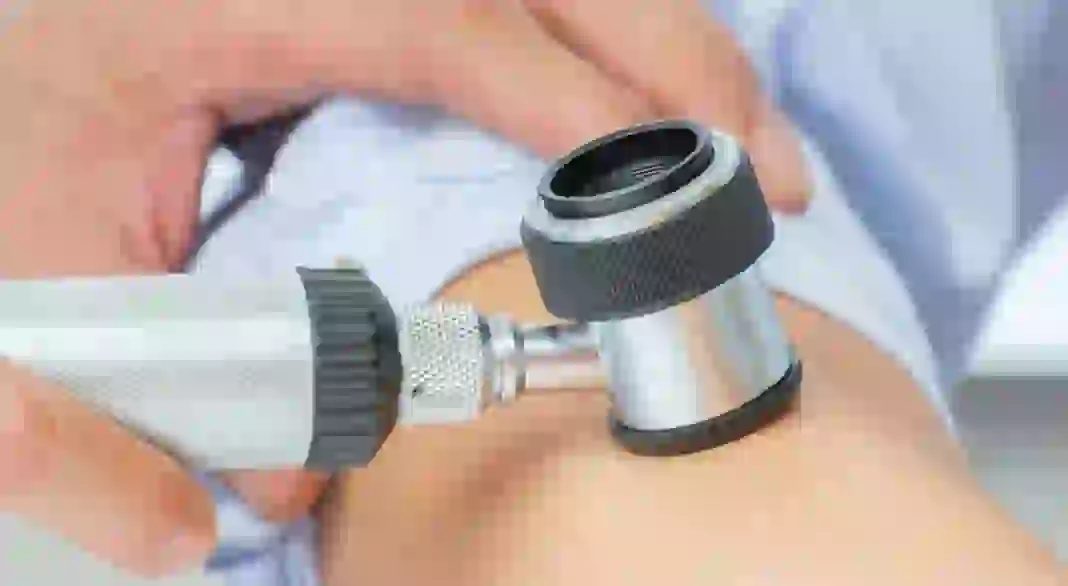
In the absence of dangerous symptoms, in addition to an increase in the size of the growth, it is necessary to monitor how it develops. Under the influence of prolonged exposure to the sun, during pregnancy, or taking hormonal medications, the mole may enlarge, but at this stage its transformation will end. The condition is the absence of irritating factors that cause melanin activation.
At the slightest change, it is recommended to visit a doctor. Self-treatment, let alone removal, is fraught with life-threatening consequences. The wounded growth can become infected.
Do growing moles need to be removed?
After passing the examination, the doctor may prescribe removal of the nevus. Another reason why a person seeks surgical removal is aesthetic discomfort. If a large mole is on the face, it will ruin a person's appearance. Doctors recommend removing moles that are located in places that are constantly subject to mechanical damage. With constant trauma to the growth, the process of degeneration into a malignant formation may begin.
Modern medicine offers several methods that can quickly, painlessly and without consequences for the body remove a birthmark. Removal methods:
- Electrocoagulation. Current is used for the operation. The procedure causes minor pain, so an anesthetic is administered before the excision.
- Surgical removal. Using a scalpel, the doctor is able to remove not only a small nevus, but also a nevus that has grown to a large size. It is not recommended to choose this method of removal if the mole is localized on a visible area of the body, since a scar remains at the site of excision.
- Cryodestruction. The growth is frozen using liquid nitrogen. After freezing it disappears. This method is not popular, as there is a high risk of re-formation of a mole in this place. This is explained by the fact that there is no possibility of controlling the depth of freezing, and the layer of the stain located deep in the dermis may not be removed.
- Laser surgery. The beam that comes from the laser removes the stain along with all tissues. Therefore, it is not possible to send the lesion for histological examination. The most popular method, despite the higher cost, since it leaves no scars and no bleeding during the excision process.
- Removal by radio waves. Using high-frequency waves, the doctor removes the birthmark. The advantage of the method is the absence of scars after surgery; the procedure and wound healing period do not take much time. Removal of small growths is indicated.
After removal, the doctor must explain how to care for the wound, taking into account the specifics of the formation. After two days, a crust forms at the removal site. Make sure that it is not damaged. After five to seven days, it will disappear spontaneously. If you tear it off, bleeding may open, which will be difficult to stop, and also cause infection.
It is recommended that the wound should not be exposed to direct sunlight and that visiting the solarium should be limited. Lubricate the wound with a solution of potassium permanganate for a week. Carry out the procedure three times a day. You can use hydrogen peroxide. Until the wound heals, it is not recommended to swim in the pool or apply cosmetics to it.
Several reasons for concern
If a person observes any changes in his mole, this is a reason to consult a doctor. It is not recommended to use traditional methods of treatment or removal. This can cause the development of melanoma, which is life-threatening. If a mole begins to itch, hurt, peel or bleed, there is no need to scratch it out or lubricate it with medications. It is necessary to consult a doctor who will conduct an examination that will not take much time and is painless. Timely detection of developing cancer cells can save a person from dangerous consequences.



